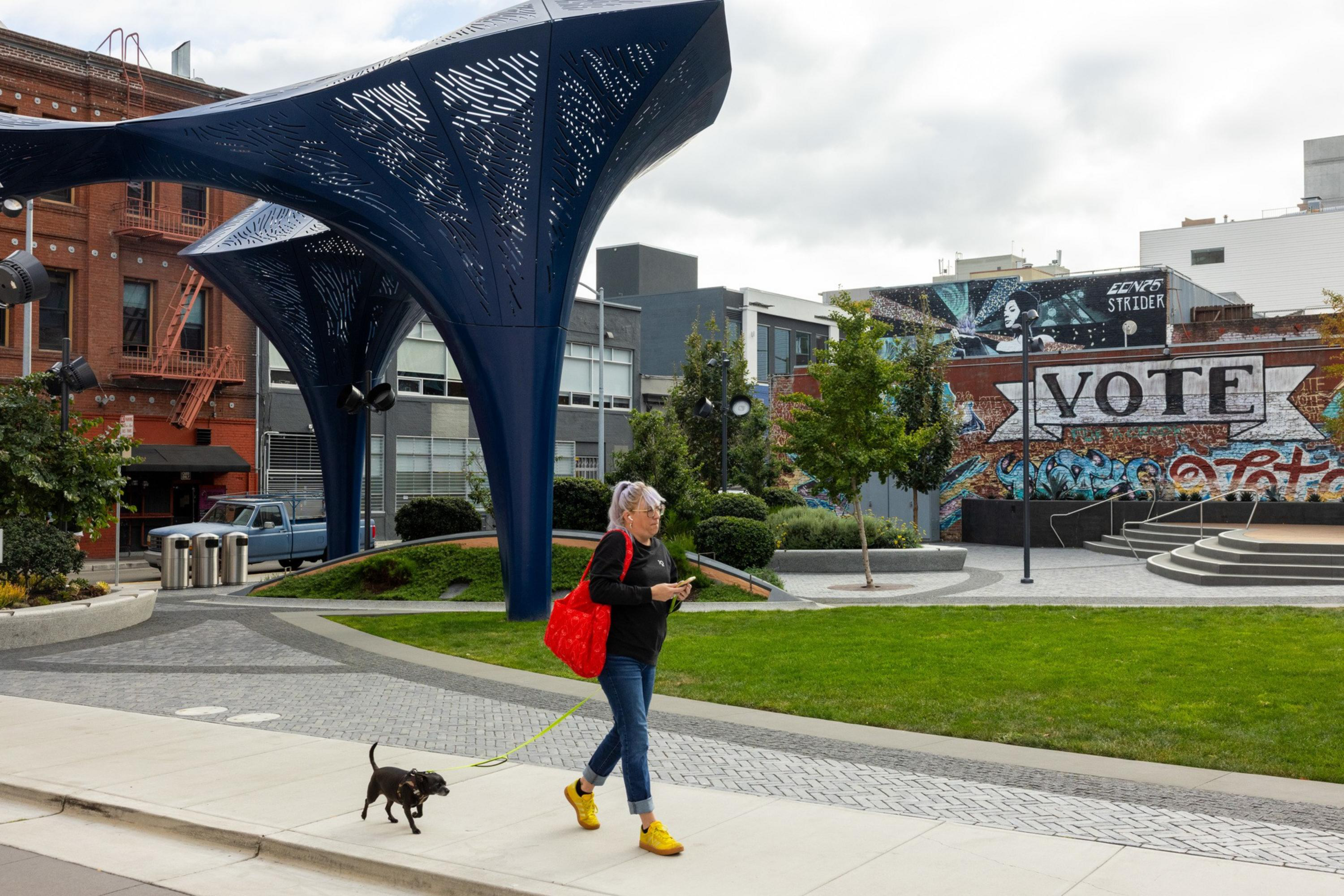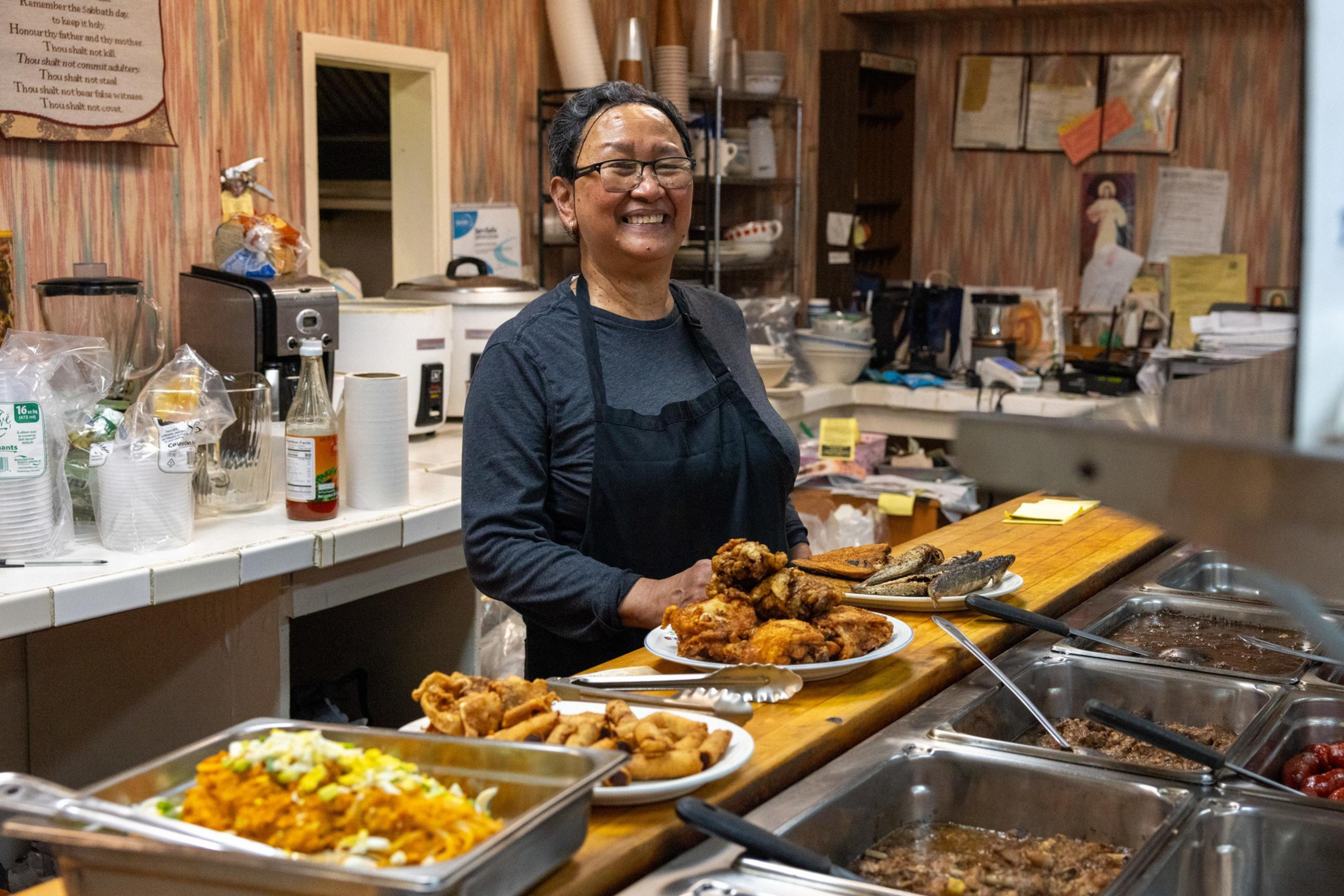Those who say location is everything are oversimplifying the rules of real estate. Timing matters a heck of a lot too.
The 5M office tower at 415 Natoma St. is at the nexus of downtown San Francisco — bounded by Union Square and Moscone Center to the north, I-80 to the east, and a fertile tech startup scene to the south.
But three years after developer Brookfield opened the 25-story building, it remains almost entirely vacant. The absence of activity at the city’s newest major office tower raises an obvious question: What’s wrong with the sparkling glass giant on Fifth Street?
The simple answer is that it was finished two years too late. When the ribbon was cut in 2022, it was a time when Big Tech firms were primarily occupied with shedding real estate rather than adding it. Zendesk had committed to leasing 90% of the 648,000-square-foot property but backed out of the deal shortly after the start of the pandemic.
It would stand to reason that having new inventory on the market would position 5M well for the city’s pending recovery.


But the lingering problem of its emptiness speaks to a more complex reality within the city’s commercial real estate market. Call it the ugly-stepchild problem: Companies interested in leasing new offices are either too early-stage for the building’s massive floor plates or can find cheaper deals in Mission Bay or the Financial District, which have better views and fewer public safety concerns.
So why can’t Brookfield lower the rents? Unlike other parts of the economy, the rules of supply and demand don’t apply evenly in commercial real estate. Rents generally come down when a new owner purchases a property at a discount. Since the developer financed the project using pre-pandemic revenue estimates, they must charge rents that are high enough to enable them to pay back loans made under those conditions.
Moreover, the floors inside the new tower (opens in new tab) are mostly empty shells with no furniture or decor. Improvements and furnishings that could help the building compete on the market would only increase the pressure to charge higher rent.
Major tenants in San Francisco have generally flocked to sublease spaces that were cast off by companies like Uber or Meta. Not only were these offices move-in ready and cheaper, they also have shorter lease terms, providing more flexibility.
The average office building in that location should cost a tenant around $68 per square foot, according to Cushman & Wakefield. But after all of Brookfield’s investments are tallied up, the developer would have to charge more than double that in order to cover its costs.
The only tenants willing to pay those top-dollar rents are going to the only building in San Francisco that’s pricier than 5M: the Transamerica Pyramid.
‘A big ship to turn around’
December will mark a decade since the 5M megaproject (opens in new tab) was approved by the city.
The 4-acre site — which today includes a newly constructed 302-unit apartment building, The George, and a public park — has been sitting quiet for so long that business and city officials have resorted to lobbying out-of-town universities to fill the unused real estate with bright-eyed college students.
Last week, the Chronicle reported that Vanderbilt University was evaluating the feasibility of the 5M site (opens in new tab), though sources say the private Tennessee university has yet to formally pursue any properties at the site.

A 2024 study (opens in new tab) by the San Francisco Chamber of Commerce identified 5M as a good fit for academia because of its proximity to transit and future student housing opportunities, since the developers have approval for an unbuilt 400-unit condominium building at the site of the former San Francisco Examiner building at 110 Fifth St.
In a March update filed to city planners, the developers said they are preparing the site for development but would break ground once “favorable economic and investment conditions” return. Another 95-unit affordable senior housing complex at 967 Mission St., however, will start construction this year with the help of low-income housing tax credits, bonds, and city funds.
One would think that a development sitting empty in the heart of the city would scare off developers, but two have pitched ideas for new skyscrapers this year: Related Companies at the historic fire station in Jackson Square and Hines at the former PG&E headquarters at 77 Beale St. The difference? They can wait until it makes financial sense to start building.
Landowner Hearst Corp. first pitched the redevelopment of the Fifth and Mission neighborhood in 2008. It initially brought in Forest City to guide the project through approvals. The Cleveland-based developer was acquired by Brookfield in 2018. A year later, Hearst granted the sites of 5M and The George to the firm. Both companies declined to comment.
“There was the thinking that [5M] would really revitalize the area,” Marty Cepkauskas, Hearst’s senior director of real estate, told The Chronicle (opens in new tab) in January. “Unfortunately, with Covid, and buildings staying vacant, and workers not coming downtown, you don’t have the activity in the area to live up to that plan and its potential.”
The departure of his company’s newspaper will add to those woes. Next year, the Chronicle will relocate from the 5M site to an office building Hearst purchased in the Financial District to make way for the stalled 400-unit condo development.
Tess Diaz-Guzman, owner of JT Restaurant in the Mint Mall and Hall building (opens in new tab) adjacent to the development, has operated it with her husband as a Filipino community gathering place for nearly three decades. During the initial phase of the project, the developers talked a big game about filling vacant storefronts, but those pledges feel farther away the more time passes, she said.

Business from the nearby San Francisco Federal Building, City Hall, and surrounding offices has evaporated since the pandemic. Still, she continues to cook her signature beef stew and chicken adobo for those who remain, including the homeless in the area, whom she feeds even if they arrive unable to pay. “If we don’t help them, the suffering will only get worse,” she said, adding that some do eventually settle up.
Until the neighborhood’s economic fortunes are reversed, residents and business owners are struggling to survive in a place where the city’s starkest street issues are concentrated.
“It’s no secret that the recovery in SoMa is slower than the [Financial District] and Mission Bay,” said Alex Sagues, a broker at CBRE who is listing retail spaces at 5M. “But it doesn’t mean it’s not recovering. The location is fantastic. It’s just a big ship to turn around.”
Update Note: This story has been updated to clarify Hearst Corp. and Brookfield’s involvement in specific aspects of the 5M project.
